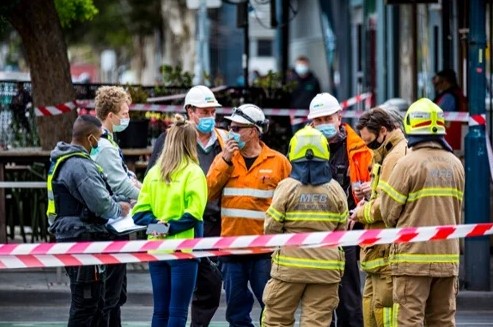In the face of accidental disasters, such as mining incidents or fire alarms, having a well-structured plan for emergency escape or evacuation can be the difference between safety and peril. This guide aims to outline essential steps and considerations to ensure preparedness and swift action during such critical times, with a particular emphasis on the role of respiratory cylinders in enhancing safety.
Understanding the Basics of Emergency Evacuation
Emergency evacuation is a structured process to quickly move people away from the threat or actual occurrence of a hazardous event. Effective evacuation plans are tailored to the specific nature of the potential dangers, such as fires, chemical spills, or structural collapses, and are designed to minimize panic and confusion during an emergency.
Preparation: The Key to Effective Response
1.Regular Drills and Training: Regularly conducting emergency drills ensures that all individuals are familiar with evacuation routes, assembly points, and procedures, thereby reducing panic and confusion during an actual event.
2.Clear Signage and Communication: Clear, visible signs indicating emergency exits and assembly points are crucial. Equally important is an effective communication system to alert and guide individuals during an evacuation.
3.Accessibility of Emergency Equipment: Ensure that emergency equipment, including first aid kits, fire extinguishers, and respiratory cylinders, is readily accessible and well-maintained.
Role of Respiratory Cylinders in Emergency Situations
In environments prone to airborne contaminants or where oxygen levels may become compromised, such as in mining incidents or fires, respiratory cylinders become indispensable. These cylinders, typically part of Self-Contained Breathing Apparatus (SCBA) systems, provide clean, breathable air, enabling individuals to navigate through hazardous environments safely.
1.Immediate Availability: Keeping respiratory cylinders readily available and ensuring they are within easy reach can significantly impact the success of an evacuation, especially in smoke-filled or toxic environments.
2.Regular Checks and Maintenance: To guarantee functionality when needed most, it’s vital to perform regular checks and maintenance on respiratory cylinders as per the manufacturer’s guidelines.
3.Training on Usage: Equally important is training individuals on the correct usage of respiratory cylinders, ensuring they can efficiently utilize them in emergency situations.
Executing the Evacuation
1.Stay Calm and Alert: Maintaining calm allows for clearer thinking and decision-making. Listen carefully to alarms and instructions from emergency coordinators or responders.
2.Use Pre-identified Routes: Proceed quickly but calmly to the nearest safe exit, following the pre-identified evacuation routes. Avoid elevators and closed doors that could lead to hazardous areas.
3.Assist Others: Help those who may need assistance, such as individuals with disabilities or those unfamiliar with the evacuation procedure.
4.Don Respiratory Protection if Necessary: In situations where air quality is compromised, don the respiratory cylinder as trained, ensuring you can breathe safely as you evacuate.
5.Proceed to Assembly Points: Once evacuated, proceed to the designated assembly point and remain there until further instructions are given by emergency personnel.
Post-Evacuation: Assessing and Adapting
After an evacuation, it’s crucial to assess the effectiveness of the evacuation plan and the role of emergency equipment, including respiratory cylinders. Gathering feedback from participants can provide insights into what worked well and areas that need improvement. Continuous adaptation and improvement of the emergency evacuation plan ensure that it remains effective and responsive to the needs of all individuals involved.
Conclusion
Emergency evacuations, while challenging, can be managed effectively with proper planning, training, and the right equipment. Respiratory cylinders play a crucial role in ensuring the safety of individuals in environments with compromised air quality, underscoring the importance of their accessibility, maintenance, and usage training. By understanding and implementing these guidelines, organizations and individuals can enhance their preparedness for accidental disasters, prioritizing the safety and well-being of all involved.
Post time: Mar-01-2024

